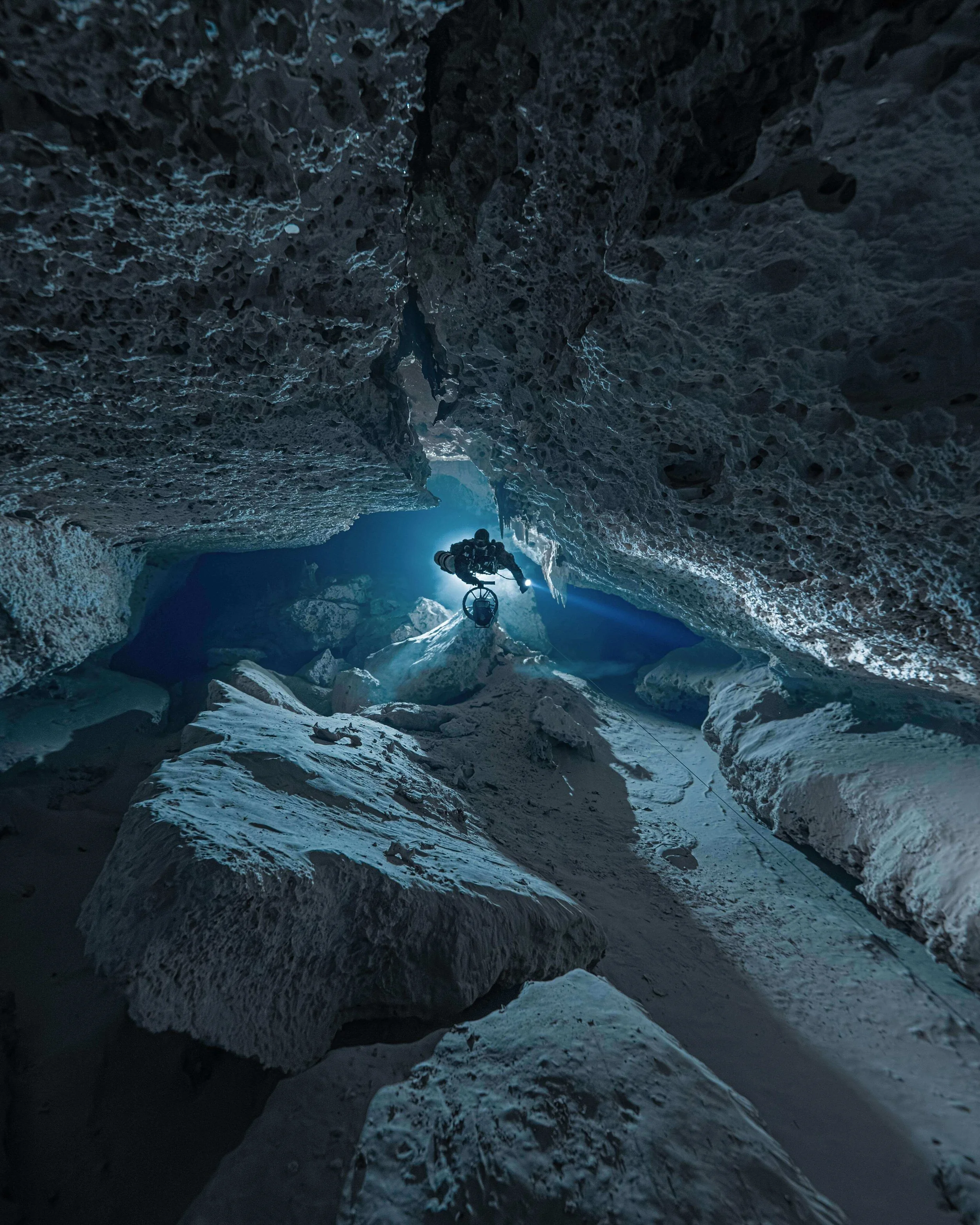True darkness? Light failures and cave diving
Cave divers must carry three lights—one primary and two backups—to ensure safety. Light failures can occur due to human error, battery issues, or equipment damage but are generally minor inconveniences. Team awareness is crucial, as divers can share lights. Modern technologies have significantly reduced light failure risks, promoting safer diving.
Exploring Mexico’s Intricate Cave Systems — OX BEL HA
Cave systems refer to interconnected water-filled caves with multiple entrances, notably prevalent in Mexico's cenotes. The Ox Bel Ha Cave System, spanning over 500 kilometers, is a prime example, showcasing intricate tunnel networks. These systems offer unique diving experiences while holding archaeological and ecological significance, reflecting both natural beauty and historical relevance.
Why Sidemount?
Sidemount diving offers enhanced streamlining, mobility, and a reduced vertical profile, allowing divers to navigate tight spaces with ease. This configuration also provides practical benefits, such as easier transportation of tanks, improved stability and trim, and increased safety through true redundancy.
Cenote Tortuga — Mega Tunnels and Ancient Wonders
Cenote Tortuga, explored since the 1990s, is a captivating cave diving site near Tulum, characterized by tannic freshwater and dazzling saltwater tunnels. Its striking formations and ancient turtle shells, dating back 200,000 years, add historical depth. Despite its shorter system, each dive reveals unique underwater landscapes, making it a memorable expedition.
Exploring the Blue Abyss: Deep Cave Dive Project
This post highlights the incredible depths of Quintana Roo's cave systems, focusing on the Pit at 120 meters and the Blue Abyss at 112 meters. I also touch on the challenges of accessing other deep sites like Yab Yum and Hoyo Negro. I dive into our 2022 exploration of the Blue Abyss with Jake Bulman, sharing the experience and the unique obstacles we faced.
Exploring Cenote Xulo — A Diver's Guide to Mexico's Hidden Underwater Gem
Cenote Xulo is a remarkable cave for divers, featuring stunning formations and a diverse environment. Initially explored in 2013, it is part of the extensive Caterpillar cave system. The cave offers unique challenges and beautiful scenery, while encouraging responsible diving practices to preserve its fragile beauty.
Shearwater Petrel 3 — review
After upgrading my rebreather controller on the Sidewinder to a Petrel 3, I documented my experiences. This setup is crucial for my cave diving exploration and teaching.
Diving at Cenote Santa Maria
I explored Cenote Santa Maria, located south of Tulum, during the 2020 pandemic. Originally known as Cenote San Pedro, I helped expand the cave from 1,600 feet to over 15,000 feet. The cave’s unique features, including contrasting upstream and downstream sections, haloclines, and stunning formations, make it one of my favorite spots, especially for experienced sidemount divers like myself.
PANNIKIN PLAINS PUSH PROJECT
In April 2023, I joined an expedition to dive Pannikin Plains cave in the remote West Australian Desert. Excited to explore the stunning Nullabor caves, I documented the experience for the Shearwater community blog. Since a 1988 collapse restricted access, special permits are now required for diving there.
Cenote Plasma Torus
In Mexico's flooded caves, I am pushing the limits of adventure. Armed with cutting-edge rebreathers, I uncover new passages and connections, expanding systems like Plasma Torus to thrilling new depths. This isn't just exploration for me—it's a relentless pursuit of discovery, driven by the promise of hidden wonders waiting around every sediment-filled corner.
Return to Corazón
Diving in Corazón del Paraíso reignites the exploration itch, unveiling great possibilities. Past efforts yielded new lines, yet each venture into silty unknowns revealed more dead ends than breakthroughs. With the right gear and unyielded ambition, what once seemed labyrinthine could transform into fresh discoveries waiting in the murky depths. Adventure calls!
Equipment For Exploration
In this article, I discuss advancements in cave diving equipment and techniques used in Mexico, focusing on Seacraft DPVs and Sidewinder Closed Circuit Rebreathers. These innovations have improved exploration efficiency by reducing transit time, extending dive durations, and allowing for deeper penetration with fewer tanks. The author shares experiences from recent exploration projects, highlighting the benefits of this gear.
Santa Maria Rediscovery and Exploration
After resurveying the lines in cenote Santa Maria, I discovered more going cave! With the team from ProTec we found more than 10,000 feet of new passage.
Enhancing Diver Safety — The Impact of the Cave Cookie's Introduction and Expansion
Cave cookies revolutionized navigation and safety in cave diving, providing a clear, standardized way to mark exits and critical junctions. Their widespread adoption has significantly reduced confusion and disorientation, making cave diving safer for all. Discover how these simple yet essential markers have evolved to enhance diver safety.














